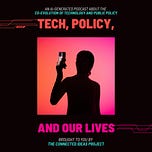I remember the first time I heard the term sovereign AI. It was one of those buzzwords that feels equal parts thrilling and ominous—a promise of autonomy wrapped in the shadow of isolation. Now, it’s a concept reshaping not just how nations think about technology but how they define themselves in a world where identity increasingly lives in code.

The United States just made its stance clear. With the release of an Executive Order on AI infrastructure, the country has declared that the future of artificial intelligence must be built within its borders—secure, self-reliant, and undeniably American. It’s a bold vision, one that seems to echo a broader global movement toward sovereign AI, where nations race to encode their values, priorities, and ambitions into the algorithms that will define the next century.
But what does this mean for the rest of us?
A Sovereign Shift in AI
The idea of sovereign AI isn’t new, but it’s gaining momentum in surprising ways. Denmark, for instance, recently powered up its own AI supercomputer, paid for with proceeds from wildly popular pharmaceuticals like Ozempic. They’re using it to develop advanced biotech tools, create AI companions for elder care, and even improve weather forecasting. In Italy, an “AI factory” is hard at work creating systems tailored to government needs, while the UAE has rolled out its own generative AI model, Falcon. Each effort is a statement: This is who we are. This is what we value.
For the United States, the stakes are higher. AI is no longer just about technological competitiveness; it’s about national security. The Executive Order outlines a roadmap to build cutting-edge AI data centers fueled by clean energy, fortified against cyber threats, and designed to keep the nation competitive in a global race where the finish line is constantly moving. The ambition is massive: AI infrastructure that doesn’t just work but works for us—driven by American innovation, insulated from foreign dependency, and accessible to everyone from defense agencies to small startups.
And yet, as the U.S. ramps up, I can’t help but think about the potential cost of this race. When every nation builds its own AI castle, what happens to the bridges between us?
Codifying Culture in Code
One of the most compelling arguments for sovereign AI is its ability to reflect a nation’s identity. As Jensen Huang, CEO of NVIDIA, put it, sovereign AI allows countries to “codify” their culture, history, and collective intelligence. But codifying something as vast and intangible as a national identity is no small task. It forces a country to ask uncomfortable questions: What do we stand for? What do we want our algorithms to prioritize? Who are we building this for?
These questions resonate deeply with me. They remind me of my own journey trying to bridge creativity and logic, work and play, personal adventure and professional ambition. They’re the same questions I ask when I think about The Connected Ideas Project: What story do I want to tell, and who do I want to tell it to?
For nations, the stakes are even higher. Sovereign AI is as much about preserving cultural identity as it is about advancing technology. It’s about ensuring that the systems shaping our future are built with values we recognize—not imported wholesale from places with priorities that may not align with our own.
A Double-Edged Sword
But there’s a flip side to all of this. Sovereign AI, by definition, is insular. It prioritizes self-reliance over collaboration, and security over openness. And while those goals are noble, they come with risks. As the World Economic Forum points out, sovereign AI can create “sovereignty traps,” where nations become so focused on protecting their own systems that they undermine the global cooperation needed to make AI safe and equitable for everyone.
Imagine a world where every country builds its own walled garden of AI. Some systems would flourish, tailored to local needs and values. Others might languish, starved of the resources or expertise required to compete on a global stage. The result? A fractured AI landscape where the benefits of this transformative technology are unevenly distributed, and the risks are compounded by a lack of shared oversight.
It doesn’t have to be this way. The U.S. Executive Order offers a glimmer of hope by emphasizing collaboration alongside sovereignty. It calls for public-private partnerships, community engagement, and even mandates that surplus computational resources be made available to startups and small businesses. It’s an acknowledgment that while the race for sovereign AI is important, the real goal should be building a system that works not just for one nation but for everyone.
The Question of Identity
So here we are, at the edge of a new frontier. Sovereign AI isn’t just a technical challenge; it’s a cultural one. It forces us to reckon with who we are and who we want to be. For the United States, that means building systems that reflect American innovation, resilience, and values. For the rest of the world, it’s a chance to think critically about what role AI should play in shaping our shared future.
As I think about this moment, I’m reminded of a phrase I’ve come back to time and again: Technology without humanity is just bits and bytes. Sovereign AI offers a chance to bring humanity into the equation—to ensure that the systems we build reflect the best of us, not just the most efficient parts.
But it’s not enough to build castles. We need bridges too.
Let’s keep pushing boundaries and stay connected. I’d love to hear your thoughts on what sovereign AI means to you. What story would you codify if you could?
Cheers,
-Titus
The podcast audio was AI-generated using Google’s NotebookLM













Share this post